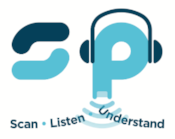Letter Spacing and Dyslexia: Can Bigger Spaces Make It Easier to Read?
The findings of a study from the UK indicate that larger gaps between letters could actually make reading with dyslexia easier for some.
It’s not a difficult fix to implement, and if these findings are accurate, it might spell the beginning of a much easier reading experience for those of us with dyslexia and literacy differences: but can bigger spaces between the letters in a word make reading easier for the dyslexic brain? A small study by Anglia Ruskin University in the UK believes that it can – and it could revolutionise everything from smartphone interfaces to exam papers.
The study interrogates some of the grey areas of dyslexia assists that haven’t been subject to the wealth of research that other fields have, such as the use of aural support and direct in-class interventions - indeed, letter spacing and dyslexia has only been subject to a handful of dedicated studies to date. The new research found that in a series of reading aloud tasks, extra-large letter spacing increased the reading speed of students in their test group, as well as went some way as to significantly reduce the number of words missed when reading. During the three-minute test, reading errors appeared to have reduced and reading speed increased, however there was no effect on other reading errors such as incorrectly ordering words or mispronunciation.
"One of the nice aspects of extra spacing is that it can be used for everyone in a class and benefit everyone," said lead researcher Dr. Steven Stagg, who is a lecturer in psychology at Anglia Ruskin University in Cambridgeshire. "It does not single out children with dyslexia."
The study, published in Research in Developmental Disabilities, was a UK-led project designed to interrogate the on-page support landscape for people with dyslexia and literacy differences. It comes at the same time as Alexandra Castle, a mum from Kent, UK is taking on the Department for Education to make exam papers more accessible for people with dyslexia. She started a petition to call for greater line spacing in all paper formats to make the reading experience easier for people whose literacy skills might be affected by dyslexia, and has received well in excess of 12,000 signatures.
The petition aims to create a standard double line-spaced format exam paper specifically for the use of students who have dyslexia. Current options, she explains, are limited – students can only request an exam paper with larger type, a measure aimed at helping students who are visually impaired, and there’s very little on-page provision for dyslexic exam-takers. This new research from Anglia Ruskin University supports the position that on-page spacing (both line and letter) can make exams easier to read and interpret for people with literacy differences, and it could change the way that we approach dyslexia-specific texts and resources.
Millions of us take exams every year, from the first SAT tests when we’re still in the first stages of education to chartered and industry-specific qualifications, PhD vivas and lifelong learning assessments. The idea that making these examinations more accessible could be facilitated by something as easy as altering line and letter spacing is an interesting one, and certainly one that many people in many roles from all over the global dyslexia community will be taking note of. It’s an interesting research angle, and the results could prove a large catalyst for on-paper accessibility – as ever, it’ll be interesting to see what this research leads into, and what further research might come from these findings.
